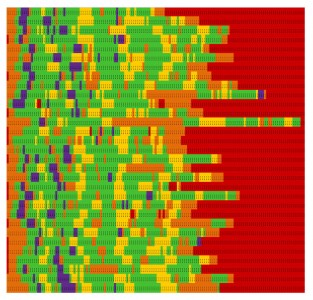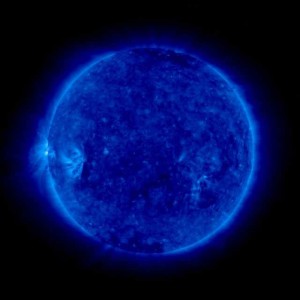Sleep holds secrets - night rhythms not so different than waking rhythms
/ It used to be you'd go to a sleep clinic, stay overnight and get totally wired up to accurately measure your sleep cycles. And that's still the case for sleep apnea and diagnosis of severe sleep problems. I met with a Pulmonologist (a sleep doctor who specializes in breathing) at the Carolinas Medical Center about a month ago to chat about sleep, and was amazed at the sleep charts he sat and showed me on his office computer. You think you're not sleeping.....oh man, there are people with serious problems. More on that soon.
It used to be you'd go to a sleep clinic, stay overnight and get totally wired up to accurately measure your sleep cycles. And that's still the case for sleep apnea and diagnosis of severe sleep problems. I met with a Pulmonologist (a sleep doctor who specializes in breathing) at the Carolinas Medical Center about a month ago to chat about sleep, and was amazed at the sleep charts he sat and showed me on his office computer. You think you're not sleeping.....oh man, there are people with serious problems. More on that soon.
I've been measuring my nightly sleep using an EEG headband for over 6 months, and there is a definite pattern, with much more activity than you'd imagine. It's more ragged with shorter bursts of deep sleep and REM sleep than I thought. I realized night rhythms are not so different than waking rhythms. Nothing holds my attention more than a few minutes... 5-10 minutes of deep sleep and BAM, I'm dreaming....20 minutes later I'm awake. All the deep sleep happens early in the night, with REM (dreaming) sleep three, four, five times during the night. How come I remember none of the dreams? Interesting to get confirmation of how many times I awake during the night.
The excel diagram in this post is 31 nights of EEG measured sleep, using a ZEO - each horizontal stripe is one night, each little numbered box is 5 minutes. Purple is deep sleep, yellow is REM, orange is awake, red is up and active, and green is light sleep....or as the Pulmonologist described, trash sleep. All the good stuff happens during REM and deep sleep. If you're sick, you heal while sleeping, you gain procedural memory during sleep, grow taller, resolve conflict with dreams, and organize memory. Neurologists measure sleep as more active than waking.
To me, the pattern of sleep is the most captivating, it reflects basic organic and human qualities. The proportions of the pattern itself is inherently recognizable and familiar.
3 hypothesis about relationship of art and science
/ Visited with Stephen Nowlin last week at the Williamson gallery at ArtCenter in Pasadena last week. He's executive director of the gallery and curator....and for years has been mounting deeply insightful shows about the relationship of art and science. He takes a non-techy view of the topic, and spends months mulling over a subject while he hunts for ways to convey and deliver new insight. The Energy show up now is stunning.
On the plane back from LA, I read the catalog of the Neuro show from a few years back....and loved this comment he made in the introduction to the show.
Visited with Stephen Nowlin last week at the Williamson gallery at ArtCenter in Pasadena last week. He's executive director of the gallery and curator....and for years has been mounting deeply insightful shows about the relationship of art and science. He takes a non-techy view of the topic, and spends months mulling over a subject while he hunts for ways to convey and deliver new insight. The Energy show up now is stunning.
On the plane back from LA, I read the catalog of the Neuro show from a few years back....and loved this comment he made in the introduction to the show.
"Beyond acknowledging that art and science significantly enrich each other's processes, NEURO [the gallery show] is informed by at least three hypotheses about the relationship between the two.
ONE is that both disciplines encourage the probing of boundaries, so it is likely that they will begin to doubt their own divisions--the boundaries said to separate art and science. SECOND, inasmuch as art is the means by which humans depict worlds of meaning, imagination and mystery, artists will be increasingly drawn to both the cultural impact of science and its exposure of reality as being far stranger than fiction. And THIRD, given our human compulsion to aspire to archetypes that are aesthetic as well as omniscient, and that we tent to self-fulfill what we have already idealized as divine, the integration of art and science is inevitable."
Abstract statistical pattern underlies all knowledge
/I’ve long thought specific visual patterns can trigger a recollection in the mind. And last month reading Smith and Kosslyn's Cognitive Psychology, I saw this explanation….and nearly jumped out of my chair.I fully subscribe to the idea that a statistical pattern is the mechanism for how the mind links and connects recollection….and in time, we may capture neurons firing/neurons not firing 11101010000 – ones and zeros, and be able to play back a science fiction film version of a recent experience.
“Some researchers have argued that an abstract descriptive representational format underlies all knowledge. But the brain is a complex system, and knowledge is used in many ways; representations play many roles in the myriad processes that constitute cognition. It is implausible that a single format would serve all these roles; it is much more likely that multiple formats—images, feature detectors, amodal symbols, and statistical patterns—are required.
Because the neurons representing the statistical pattern are conjunctive neurons, all neurons are linked and become associated with the neurons that represent the statistical pattern. Each element in the statistical pattern develops associations back to the image and feature units that activated it.
Together, this sequence of processing phases establishes a multilevel representation of the scene as it is perceived. It is possible, as it were, to “run the film backward.” In a process known as simulation, a statistical pattern can reactivate image and feature information even after the original scene is no longer present. Whereas bottom-up processing through a perceptual system produces a statistical representation, top-down processing back the other way reenacts, at least partially, the original visual processing. This top-down capability allows you to generate mental images and to remember past events.”





